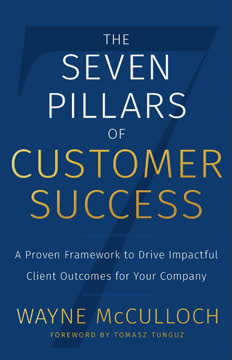Key Takeaways
1. Customer Success is a strategic growth engine, not merely a retention function.
Customer success has five main responsibilities: Eliminate churn through value attainment, Drive increased contract value through value expansion, Improve the customer experience, Gain customer acquisition through building advocacy, Proactively lead the customer (to success).
Evolving role. Customer success has evolved beyond its initial "firefighting" role of preventing churn. While retention remains critical, modern CS is a multifaceted discipline that actively drives growth and profitability for the company. It's about creating a continuous cycle of value for the customer, which in turn benefits the business.
Beyond retention. The impact of customer success extends far beyond simply keeping customers. It directly influences:
- Profitability: Retaining customers is significantly cheaper than acquiring new ones, with a 5% increase in retention potentially leading to a 25% increase in profits.
- Expansion: Happy, successful customers are more likely to increase their spend (upsell/cross-sell).
- Advocacy: Delighted customers become powerful advocates, driving new customer acquisition through trusted referrals.
- Customer Lifetime Value (CLV): By ensuring ongoing value, CS maximizes the long-term revenue generated from each customer.
Customer-centric philosophy. True customer success is a company-wide philosophy, not just a department. Every team, from finance to product, impacts the customer journey. The CS team carries the torch, coordinating efforts to ensure a cohesive, positive experience that leads to sustained value and growth.
2. A comprehensive toolbox is essential for scaling customer success effectively.
To build an excellent customer success organization, to really survive in the world of customer success, there are a series of tools you will need to scale your best practices in a repeatable way.
Equipping for success. Just as a bush survivalist needs specific tools, customer success professionals require a robust toolbox to navigate the complexities of the customer journey. These tools enable CSMs to be proactive, efficient, and consistent in delivering value at scale. Without them, efforts become reactive and unsustainable as the customer base grows.
The 10 essential tools:
- Moments of Truth: Any customer interaction, digital or in-person, that forms an impression.
- Playbooks: Standardized best practices for repeatable, efficient responses to common scenarios.
- Customer Health: A data-driven score to proactively identify customer well-being and risks.
- Customer Risk Framework: A system to identify, track, and manage potential threats to customer success.
- Customer Success Plans: Jointly agreed-upon blueprints for delivering value and achieving customer outcomes.
- Segmentation: Grouping customers by similar needs to allocate resources effectively.
- Customer Delight: Exceeding expectations to foster loyalty, beyond just gifts.
- Voice of the Customer (VoC): Listening, analyzing, and acting on customer feedback.
- QBRs & EBRs: Structured meetings to review progress, discuss strategy, and reinforce value.
- Metrics: Quantifiable measurements to track progress, report success, and inform decisions.
Foundation for growth. These tools are not merely administrative aids; they are strategic assets that empower CSMs to deliver exceptional experiences consistently. They provide the structure needed to move from ad-hoc problem-solving to a systematic, scalable approach, ensuring that every customer interaction contributes to their long-term success and the company's growth.
3. Operationalizing Customer Success is the foundational pillar for consistent value delivery.
The customer success team delivers proven best practices at scale, in a repeatable way and with efficiency, to drive the desired outcome of your customer and your company, wrapped in an exceptional customer experience.
Maximizing impact. Operationalizing CS is the least understood yet most critical pillar. It's about applying a systematic approach to automate tasks, orchestrate processes, and define measurable goals that align with both customer and company priorities. This ensures that CS capabilities are scalable and consistent across all customers, regardless of volume.
The role of CS Operations. A dedicated CS Operations (CS Ops) function is crucial for this pillar. They build the infrastructure that allows CSMs to focus on customer relationships and strategic guidance. CS Ops:
- Develops and maintains playbooks.
- Manages customer health scoring systems.
- Ensures data integrity and reporting.
- Automates routine tasks to free up CSM time.
- Facilitates cross-functional alignment.
Digital Customer Success. The future of scaling CS lies in "digital customer success," which integrates human empathy with technology. This isn't just "tech touch" but leveraging product-embedded services, AI, and automation to deliver personalized, outcome-based support at scale. This approach allows human interaction to be strategically deployed where it has the most impact, ensuring that even a vast customer base receives a high-quality, tailored experience.
4. Exceptional Onboarding ensures rapid "Value One" realization and sets the customer journey's tone.
Customer onboarding is jointly defining a Customer Success Plan together and proactively guiding a customer to achieve value one in the fastest possible time.
First impressions matter. Onboarding is the critical first hurdle in the customer journey. A poor onboarding experience can derail the entire relationship, making it incredibly difficult to recover. The goal is to proactively guide the customer, establish clear expectations, and help them achieve their "Value One" – their first significant business achievement – as quickly as possible.
Key elements of exceptional onboarding:
- Focus on the Right People: Identify key stakeholders (project managers, administrators, decision-makers) on the customer's side.
- Understand Specific Goals: Clarify what each individual aims to achieve with the product.
- Clear Timelines & Execution: Establish mutually agreed-upon plans for deployment and initial use.
- Deliver Value One: Prioritize and achieve the customer's first tangible success quickly to solidify their decision.
- Path to Maturity: Outline the Customer Success Plan to guide them towards broader adoption and long-term success.
Onboarding vs. Adoption. It's crucial to distinguish onboarding as a finite activity with a clear start and end, focused on initial setup and Value One. Adoption, conversely, is an ongoing process of continuous usage and feature utilization. Onboarding can occur multiple times for the same customer (e.g., new department, new product), each with its own defined scope.
5. Driving Adoption to "Operational Dependence" is paramount for sustained customer value.
Customer adoption is achieving operational dependence, while simultaneously achieving business value by using the right features and functionality of the solution.
Beyond initial use. Adoption is not merely about getting users to log in; it's about embedding the product so deeply into their daily workflows that they become "operationally dependent" on it. This means they consistently use the solution to achieve their business goals, leveraging its features and functionality to their fullest potential. Without this, even a well-onboarded customer risks churn.
CSM's pivotal role:
- Generate Operational Dependence: Remove barriers, provide ongoing training, and demonstrate how the product makes their work easier and more effective.
- Identify & Engage Stakeholders: Work with key individuals who can champion the product internally and drive widespread use.
- Monitor Consumption: Track not just licenses, but also service hours, API calls, and feature utilization to ensure customers maximize their investment.
- Lead Change Management: CSMs must influence and support change management initiatives to help users adapt to new workflows.
Leveraging data and insights. CSMs use product usage data, customer feedback (e.g., "ride-alongs," "office hours"), and best practice benchmarks to identify areas for deeper adoption. They proactively introduce new features ("release readiness") and demonstrate how these can further enhance the customer's business value, ensuring the product remains indispensable.
6. Customer Retention is secured by proving future value, not just past successes.
The customer doesn’t choose to stay with you because of the historical value you’ve driven for them—they stay because of the vision and promise of the future you have painted with them.
Orchestrated process. Customer retention is a carefully orchestrated process designed to increase the odds of a customer choosing to extend their relationship. While past value is important for building trust, the ultimate decision to renew is driven by the customer's belief in the future value and innovation your company promises to deliver.
The high cost of churn:
- Lost Revenue: Direct loss of subscription fees.
- Missed Expansion: Forfeiting future upsell/cross-sell opportunities.
- Data Loss: Losing valuable behavioral data for product and marketing insights.
- Competitor Gain: Empowering rivals with your former customer's business and feedback.
- Internal Disruption: Executive panic, "SWAT teams," and reactive measures divert resources from strategic initiatives.
- Team Morale: CSMs feel demoralized, potentially leading to reduced engagement or attrition.
CSM's influence on renewals. While a dedicated renewals team often handles the transaction, CSMs are crucial influencers. They provide deep customer insights, track Customer Success Plan progress, and communicate value through QBRs/EBRs. Accurate retention forecasting, driven by CSM insights and customer health scores, is paramount for stable financial planning and resource allocation.
7. Customer Expansion is a vital growth lever, significantly amplified by Customer Success Qualified Leads.
Customer expansion occurs when a customer finds value in your solution and grants you the opportunity to increase that value.
Beyond initial sale. Expansion is the "main event" in the customer success Ironman. It signifies that a customer has found sufficient value to deepen their relationship, leading to increased revenue through upsells (more of the same) or cross-sells (new products/services). This is far more cost-effective than acquiring new logos.
The power of "Uptelling." CSMs don't "sell" in the traditional sense; they "uptell." This means educating customers about additional capabilities, related solutions, and use cases that can drive further value and solve new problems. This consultative approach builds trust and naturally uncovers expansion opportunities.
Customer Success Qualified Leads (CSQLs):
- High Conversion: CSQLs convert at a significantly higher rate (60-70%) than Marketing Qualified Leads (5-20%).
- Deep Insight: CSMs possess intimate knowledge of customer needs, politics, and timing, making their leads highly qualified.
- Growth Engine: Formalizing CSQL capture and measurement allows CS to demonstrate its direct impact on revenue expansion, transforming it from a cost center into a recognized growth engine.
- Incentivization: Rewarding CSMs for CSQLs (e.g., SPIFFs) motivates them to actively seek and document these opportunities without tying them to sales quotas.
8. Leveraging Customer Advocacy transforms satisfied customers into powerful market assets.
Customer advocacy is a competitive advantage for your company because it assists in the acquisition of new logos and solidifies existing customers through a multitude of assets and programs.
Beyond a "pat on the back." Customer advocacy is the strategic capitalization of positive customer sentiment. It's not just about receiving compliments; it's about actively enabling and amplifying customer voices to drive new business and reinforce existing relationships. Advocacy transcends all other pillars, as it can be cultivated at any stage of the customer journey.
Benefits of advocacy:
- Competitive Advantage: Provides authentic proof of product value and company reliability.
- Accelerates Deal Cycles: Peer reviews and testimonials build trust faster than sales pitches.
- Boosts Retention & Expansion: Success stories inspire struggling customers and highlight new use cases.
- Provides Insights: Honest feedback from advocates reveals strengths, weaknesses, and market perceptions.
Key advocacy assets and programs:
- Value/Maturity Assessments: Quantify impact and benchmark customer progress, providing data for testimonials.
- User-Generated Content: Testimonials, online reviews, and detailed case studies.
- Customer Referrals: Both active (direct introductions) and passive (word-of-mouth, "referring in" by former champions).
- Focused Events: Opportunities to elevate advocates through speaking engagements, hackathons, or customer appreciation events.
- Customer Advisory Boards (CABs): Gather strategic insights and foster collaboration among key customers.
- Champion Programs: Nurture passionate users with exclusive access, training, and recognition.
- Online Communities: Platforms for peer-to-peer learning, idea sharing, and direct engagement with the company.
9. Evolving CSMs into Strategic Advisors elevates customer relationships and business outcomes.
A strategic advisor is someone who actively advises organizations on important strategic decisions, in an unbiased fashion, using deep industry knowledge and domain expertise, to deliver the best outcomes through business and digital transformation.
Beyond "trusted advisor." While all employees should be trusted, a strategic advisor offers an elevated level of capability. They provide unbiased, forward-looking guidance on critical strategic decisions, leveraging deep industry and product knowledge to drive business and digital transformation for their customers. This makes them indispensable.
The KSE Model™ for Strategic Advisors:
- Knowledge:
- Industry Knowledge: Understanding trends, disruptions, and competitive landscapes.
- Customer Knowledge: Deep insight into customer priorities (long-term), internal politics, and relationship maps.
- Product Knowledge: Comprehensive understanding of the company's product portfolio, roadmaps, differentiators, and transformational capabilities.
- Skills:
- People Skills: Assertiveness (to push back when necessary), empathy (to truly understand pain points), and relational intelligence (to build rapport and navigate internal dynamics).
- Analytical Skills: Data analysis, finding meaning in data, presenting data-driven solutions, and analytical awareness.
- Prioritization Skills: Effectively managing inboxes, calendars (making time for "relationship" activities), and engaging in "deep work" for continuous learning.
- Experience:
- Prescribe: Confidently advise and recommend solutions, even when customers resist.
- Protect: Engage in difficult conversations to shield customers from poor decisions, explaining consequences.
- Proact: Lead customers to success by anticipating challenges and opportunities, driving the Customer Success Plan.
Invaluable asset. Strategic advisors are proactive, focusing on the customer's future success. They build wide and deep relationships within the customer's organization (e.g., a 3x3 model) and consistently educate them. Their ability to transform a customer's business makes them a highly valued, monetizable asset, difficult for customers to leave behind.
10. The future of Customer Success demands CCO leadership, monetization, and data-driven proactivity.
I believe the future will see brave and trailblazing leaders reimagine the design of the post-first-sales world to map to the customer journey, not the internal silos that exist today.
Organizational shift. The future of customer success will see it report directly to the CEO or a Chief Customer Officer (CCO), rather than sales. This elevates CS to its rightful strategic position, preventing it from being relegated to a support function and allowing it to fully realize its potential as a growth engine. A CCO can break down traditional silos (sales, marketing, support, product) to create a truly cohesive, customer-journey-centric organization.
Key future trends:
- Go-to-Market Evolution: Mission statements will clearly define CS's role in onboarding, adoption, retention, expansion, and advocacy.
- Employee Investment: Over-investing in CSM training and certification (e.g., product, industry, strategic advising) is crucial, as they are the primary drivers of customer value and company growth.
- Monetization: CS will move beyond being a cost center by developing "success services" – outcome-based, time-bound, and business-value-oriented offerings that customers are willing to pay for. This includes monetizing strategic advisory capabilities.
- Increased Onboarding Investment: Recognizing onboarding as the foundation for long-term success, companies will dedicate more resources to perfecting this initial stage.
- Proactive Success: Leveraging data analytics, ML, and AI to predict future challenges and opportunities, allowing CSMs to act before issues arise.
- Boardroom Presence: CS will gain greater boardroom attention, presenting critical metrics like GRR, customer health, adoption, time-to-value, and advocacy impact to demonstrate strategic value.
AI and human intelligence. While AI and automation will streamline many CS processes, the human element – bold, creative, strategic, and empathetic CSMs – remains irreplaceable. The future lies in a seamless blend of AI and human intelligence, creating a superior customer experience that is both efficient and deeply personal.
Last updated:
Review Summary
The Seven Pillars of Customer Success receives generally positive reviews, with readers praising its insightful content and practical approach to customer success strategies. Many find it valuable for both new and established teams, appreciating its focus on relevant insights and conversational tone. Some readers highlight its usefulness in framing challenges and providing a solid framework for customer success implementation. However, a few critics note that the book contains platitudes and may not age well. Overall, it's considered a helpful resource for those in B2B SaaS and customer success roles.
Similar Books
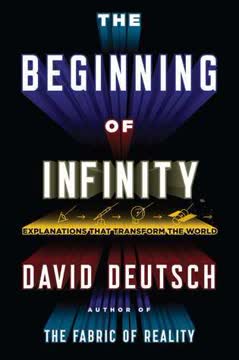
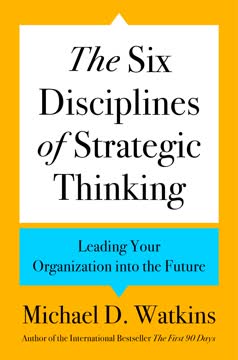
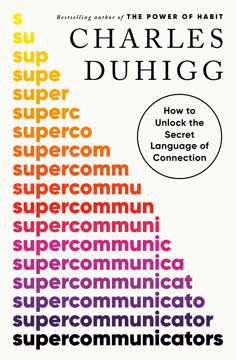

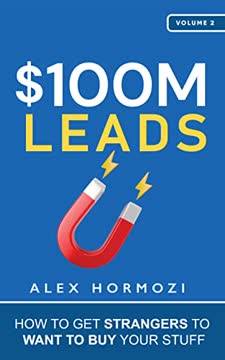
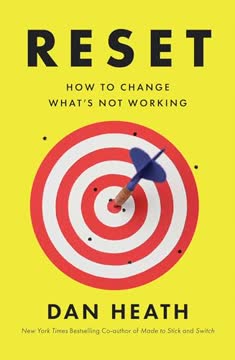
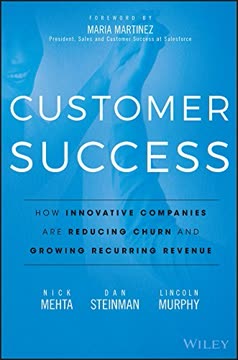
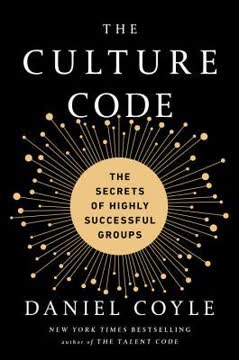
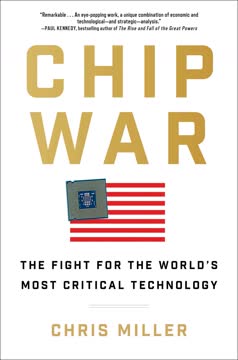
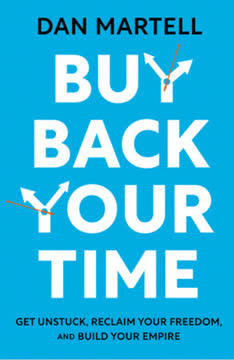
Download PDF
Download EPUB
.epub digital book format is ideal for reading ebooks on phones, tablets, and e-readers.
